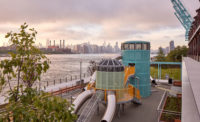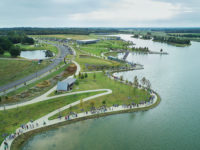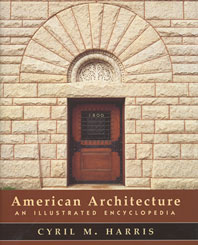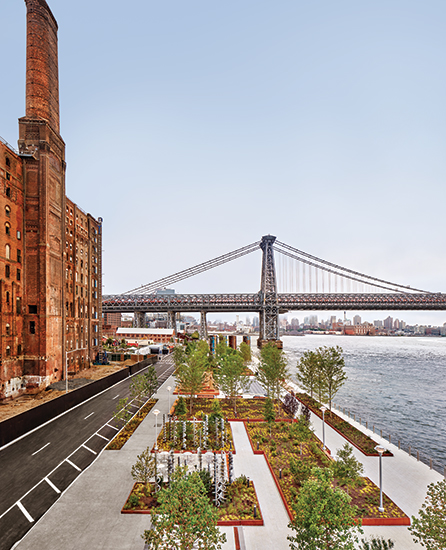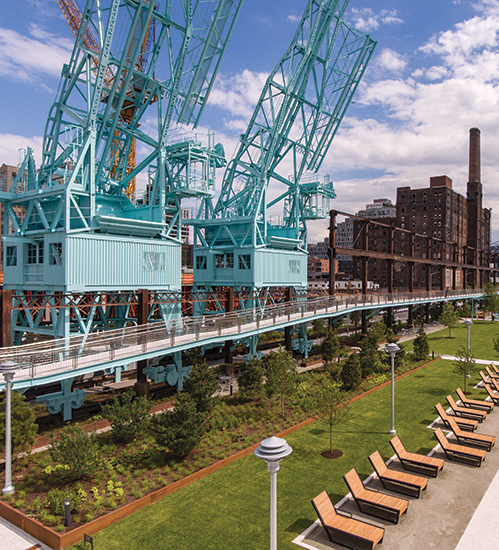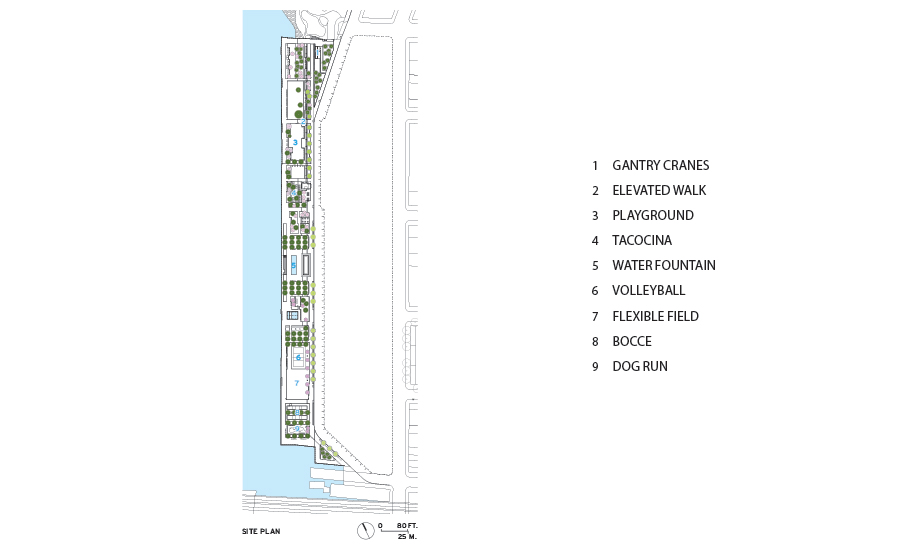Domino Park by James Corner Field Operations
Brooklyn, New York

Inaccessible to New Yorkers for over a century, the erstwhile Domino Sugar plant’s sweeping waterfront now connects to the neighborhood. JCFO transformed the once dilapidated pier into a quarter-mile long esplanade anchored by the original 1882 refinery building.
Photo © Daniel Levin

Salvaged factory artifacts are woven into the fabric of the park, which features nearly 175 different species of trees.
Photo © Daniel Levin

The park is rooted in the site’s industrial past. Two gantry cranes signal the park’s presence and serve as the base of an elevated promenade, a reference to the catwalks connecting the original factory buildings.
Photo © Daniel Levin

The walkway is supported by steel columns from the demolished Raw Sugar Warehouse.
Photo © Daniel Levin

Image courtesy James Corner Field Operations





Architects & Firms
New Yorkers—as they do—grumble about new development and the gentrification that comes with it, but Domino Park, Brooklyn’s newest waterfront destination, is proof that, with the right deal, they can get something spectacular in return. The six-acre park, designed by James Corner Field Operations (JCFO), is part of a mixed-use development, led by Two Trees Management, that will eventually bring 2,800 market-rate and 700 affordable housing units, 380,000 square feet of offices, and 200,000 square feet of commercial and retail space to the former Domino Sugar factory parcel. For the price of allowing three gargantuan glass towers, which will dwarf the site’s landmarked redbrick refinery building, once the tallest in Brooklyn, the previously inaccessible waterfront has been transformed into a vibrant recreational space, open to the public.
Additional Content:
Jump to credits & specifications
Two Trees purchased the 11-acre site for $185 million in 2012 from a developer that ran into financial trouble. A previous plan by Rafael Viñoly had already undergone public approval, but Two Trees submitted a revised version, with more commercial space and parkland, developed by SHoP and JCFO. Contentious from its inception, the new plan eventually won community support in large part because of its affordable-housing and public-space components.
Domino Park marks the estimated $3 billion development’s second phase. The first, a SHoP-designed residential building on nearby Kent Avenue resembling a square doughnut, was completed last summer; the final phase—a tower that will loom over the Williamsburg Bridge—is estimated to open in the early 2020s. Within the next few years, construction will begin on the 1882 refinery, which will be converted into a flexible-workplace campus by New York–based Practice for Architecture and Urbanism (PAU).
The park—its spine a continuous 1,200-foot walkway along the East River, with the Manhattan skyline beyond—features a gradient of active to passive spaces, with semiprivate nooks carved out along the way. According to Lisa Switkin, partner at JCFO, what allowed leeway for the design is the fact that the project is entirely privately financed. “The Parks Department reviewed drawings and details, but, ultimately, they’re not responsible, so we were able to use materials for the furnishings that are unfamiliar to them, like reclaimed wood from the warehouse,” Switkin says. The Parks Department can, however, take over maintenance should Two Trees default on their fiscal responsibilities.
The design team took measures to root the new park in its past life as one of Brooklyn’s dominant industrial operations (the factory controlled over 90 percent of the country’s sugar production at the turn of the 20th century but was shuttered in 2004, when American Sugar Refining consolidated production elsewhere). Twenty-one steel columns from the demolished 1930 Raw Sugar Warehouse and 585 linear feet of crane tracks form an elevated colonnade that stretches from two original teal gantry cranes, docked at the park’s north end, down to the refinery. Other salvaged artifacts, notably the 36-foot-high rusting syrup tanks, are placed along the esplanade. A children’s playground takes the form of a miniature sugar plant, its climbing towers painted in the turquoise and yellow of the original Domino color palette. Plus, the iconic neon sign that once adorned the 1960 glass Bin Structure will be resurrected on the refinery’s facade once renovation is completed.
Switkin notes that it was important that the park not seem “like the backyard of some development” but rather stand on its own. In this regard, it is quite successful: by extending a city street into the site, the waterfront is both separated from the development’s accompanying buildings and connected to Kent Avenue, the area’s main thoroughfare.
As you walk along Kent, there is no doubt that the park is welcome to all. Open for just two months, it has already established itself as a neighborhood mecca. It certainly doesn’t lack choices: a dog run, volleyball court, and taco joint run by restaurateur Danny Meyer are all included, and—if it’s not too crowded—there are ample places for quiet reflection. The central gathering area—anchored by tiered seating and a fountain of gurgling mini-geysers, à la the Spanish Steps—pulses with activity on a hot summer day.
Some attempts to connect the new park to Domino’s industrial past seem a bit contrived—the factory relics can appear as mere quirky sculptures. That aside, the park provides a crucial amenity for a neighborhood lacking green space and, well before the development’s completion, gives the existing community a stake before a new one arrives.
CreditsLandscape architect: James Corner Field Operations — Lisa Switkin, partner in charge; Karen Tamir, Sanjukta Sen, Tsutomu Bessho, Johanna Barthmaier, Ashley Ludwig, Eric Becker, project team
Engineers: Robert Silman Associates (structural); Philip Habib Associates (civil); Altieri Sebor Wieber (m/e/p); McLaren Engineering Group (marine)
Consultants: Lighting Workshop (lighting); Mark Riegelman (playground); Soucy Aquatik (water feature)
General contractor: Kelco |
SpecificationsConcrete pavers Wausau Tile
Lighting VarioLED; Bega |



